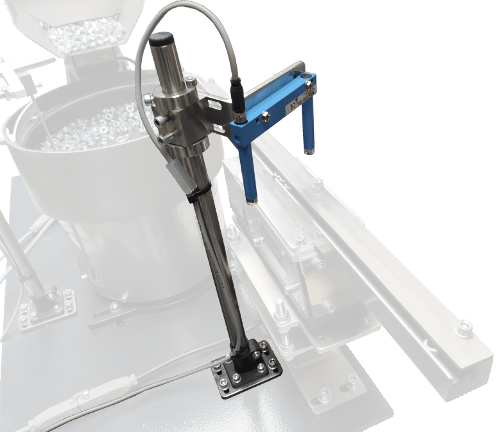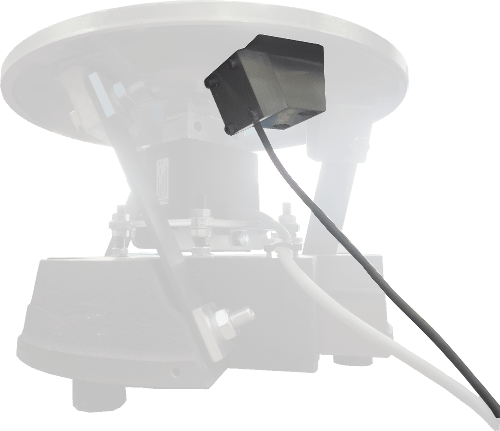
Sensors

Filling level sensor
The filling level sensor fitted on a stand controls level of elements inside the cylindrical feeder. It sends a signal if volume of elements falls below the fixed limit.
Application of the filling level sensor in association with a vibratory hopper allows to semi-automatically operate a set of two feeders thus reducing any need of third parties intervention.
We offer two stand versions allowing for fitting the sensor to the assembly plate or to a sound absorbing casing.

Buffer filling sensor
Both the buffer and the buffer filling sensors are necessary for correct cylindrical feeder or vibratory feeder set operation management.
Their task is to control filling of the buffer located outside the cylindrical feeder.
A linear feeder is a buffer in our solutions as standard (this can also be a gravity shute or belt conveyor).
Application of such solution allows for stopping or starting cylindrical feeder in such way so that fed parts are not queuing inside its bowl. Such operation extends cylindrical feeder’s lifetime, has positive impact on quality of its operation and in some cases is necessary for its correct working.
The best way to check buffer filling is to apply 2 sensors operating in MIN-MAX logic. In some cases use of only 1 sensor with constant start and stop delay is allowed.

Accelerometer
Accelerometer is used in cylindrical vibratory feeders to maintain constant feeder speed of operation in case of big changes of fill mass.
Cylindrical feeders filled with any elements of high summary mass (at 10 kg and more level) may show fluctuations in their operating parameters (speed of travel, frequency amplitude) with decrease of the volume of elements inside.
The accelerometer with proper controller (with implemented PI controller) creates a feedback loop changing settings in such way so that the feeder can operate with possibly constant speed.
We have on offer 2 types of controllers, which allow to connect an accelerometer.